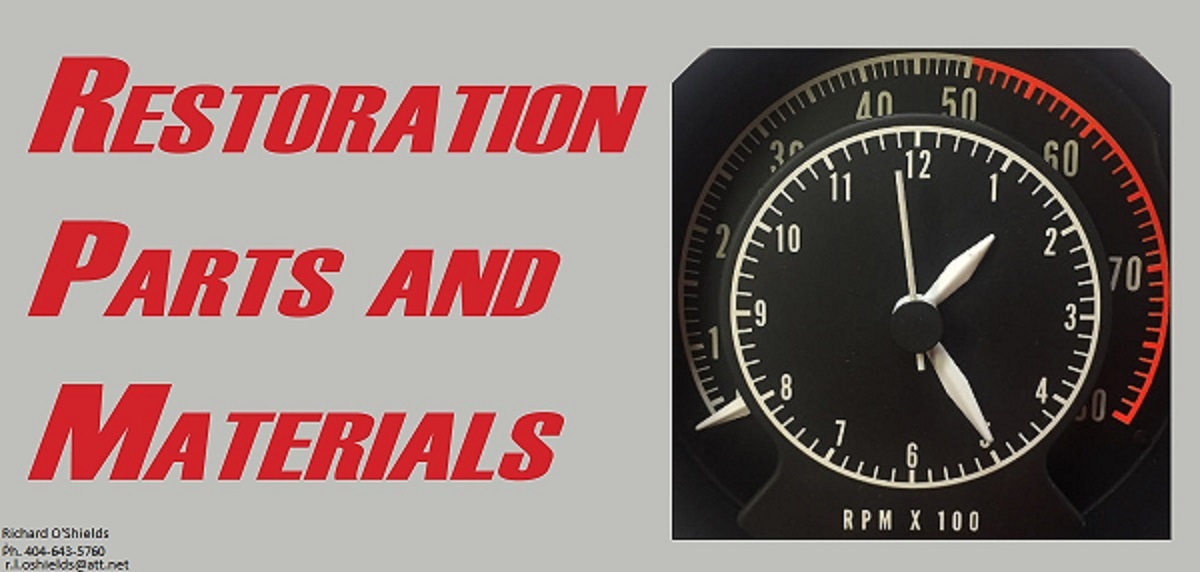You are using an out of date browser. It may not display this or other websites correctly.
You should upgrade or use an alternative browser.
You should upgrade or use an alternative browser.
Firm Feel vs Steer & Gear
- Thread starter Cazman
- Start date
Indeed. I thought I HAD investigated my options, because I had everything I needed to do the job, including rebuilding the steering column (both bearings, turn signal switch, etc, and all the FF stuff) and I HAD looked at that biscuit with a strong light, and it LOOKED just fine. In fact, when you look at my pic, and considering how it's hidden by the heat shield can, and there very little slop at the joint......you can see how I didn't think I needed one.
Oooops!
So now I'm pretty sure every old Mope with an original biscuit needs a new one. Anyone else anticipating this job (if you have the intermediate shaft) should order their $6 Land Rover biscuit right now (or wherever that biscuit is from).
Oooops!
So now I'm pretty sure every old Mope with an original biscuit needs a new one. Anyone else anticipating this job (if you have the intermediate shaft) should order their $6 Land Rover biscuit right now (or wherever that biscuit is from).
I very briefly considered bonding the four pieces back together to get myself out of the jam I was in, but I figured 1) the old rubber would soon tear 1/128ths of an inch away from the bond, 2) I didn't want to do this again, and 3) with a phone call to them I found I could get the Bouchillion item before I actually needed to put the car back together. I also considered making one from a hockey puck (which I have several here in Florida as jacking pucks for my Vette), but decided the precision of the Bouchillion item was a safer bet.Did the other options include using some high-heat black silicone to put the old biscuit back together? Just curious.
Oh.....just remembered...I also considered banding the thing together with a stainless steel cable tie (or two, tightened in opposite directions) which I have plenty of in my parts stash. That, along with some Pliobond adhesive would probably have done the trick. But again, the spendy Bouchillion item was a guaranteed permanent solution.
swisherred
Senior Member
What exactly is the purpose of this part and why is it rubber while the new one is aluminum?
I suspect it's in rubber for noise/vibration isolation. Just like the normal rag joints seem to be from tire sidewalls (cord and all). The aluminum gives a solid attachment and should have no durability issues. Some newer fwd outer tie rod ends have rubber isolation in them, with rack and pinion steering. Their intermediate shafts normally have no rubber in them, so when replacing the OEMs with the aftermarket items (with no rubber isolation in them), more "stuff" is felt in the steering wheel, but steering accuracy seems to be a little better.
CBODY67
CBODY67
What exactly is the purpose of this part and why is it rubber while the new one is aluminum?
These were "luxury cars", so everything was done to isolate the humans inside from the road. The biscuit would have been to lessen any vibes in the steering wheel. But the last thing I'm concerned about is some vibes in the wheel. Besides, the original biscuit is rock-hard at this point anyway!
As I've mentioned before, now that I'm totally rebuilt in the steering department, the smallest rotation of the wheel changes course and holds that course. Zero slop, zero wandering.
A while back, Bouchillion (they told me) made a rubber version, but they didn't like it. The alummy version should last approximately five-hundred-thousand miles. Or longer.
Flex Seal can fix ANYTHING.
lemondana
Active Member
If your lower steering column and the steering box aren't lined up perfectly-which most aren't, that aluminum puck will NOT be such a good thing. Spend the $200 on ebay and get the original correct part. They are NOS Mopar parts with the part number on them. I to-didn't like the steep price tag, but bought one anyway. The guy or place selling them somehow knew they would be in demand and bought every NOS one he could find, for little to nothing back in the day.
If your lower steering column and the steering box aren't lined up perfectly-which most aren't, that aluminum puck will NOT be such a good thing.
I must disagree. This OEM biscuit was never intended to be a flex joint for a misaligned steering shaft. It is quite robust in its construction (think *hockey puck*) and would allow very little “u-joint” action, if any at all. That is the function of the pot coupler.
This biscuit is for vibration isolation at the wheel. Most other Mopars don’t have it at all.
The alumny item is just fine. If someone has shaft alignment problems, they have bigger problems than this joint.
Last edited:
Your head is on right, the aluminum version solves the problem permanently... I did use hockey pucks once, as cab mounts one an old P/U, long, long ago... they really don't hold up to alternate uses as well you'd hope, and NOS is likely to crumble pretty quick too. IMO, if you don't feel too much additional vibration through the steering wheel, this is a fully successful repair. If the vibration is more than you like, it's still a safe repair, but then you may as well enjoy the lollipop... sucker...I must disagree. This OEM biscuit was never intended to be a flex joint for a misaligned steering shaft. It is quite robust in its construction (think *hockey puck*) and would allow very little “u-joint” action, if any at all. That is the function of the pot coupler.
This biscuit is for vibration isolation at the wheel. Most other Mopars don’t have it at all.
The alumny item is just fine. If someone has shaft alignment problems, they have bigger problems than this joint.



Jon O.
Well-Known Member
It's a solid piece of metal, it should last five hundred thousand years.A while back, Bouchillion (they told me) made a rubber version, but they didn't like it. The alummy version should last approximately five-hundred-thousand miles. Or longer.
I did use hockey pucks once, as cab mounts one an old P/U, long, long ago... they really don't hold up to alternate uses as well you'd hope, and NOS is likely to crumble pretty quick too.
True about the pucks. You'd think they would last forever in any use, but even when used when jacking a car (to protect a Vette frame and the fiberglass rocker panel from the jack) they start to crumble a lot sooner than you would expect, given their apparent roubustness. I guess they're made for hockey....
The high-heat environment near the left exhaust manifold wouldn't improve matters.
Imagine what a sucker I would have felt like if I had cheeeeped-out and used a hockey puck, only to have it disintegrate in a year.
It's a solid piece of metal, it should last five hundred thousand years.
Well you see....that's where you're wrong. Haven't your heard? The world is going to end in 2030 if we don't embrace the Green New Deal.
At the top of AOC's target list is guys who own old Mopars....

Well you see....that's where you're wrong. Haven't your heard? The world is going to end in 2030 if we don't embrace the Green New Deal.
At the top of AOC's target list is guys who own old Mopars....

OCE was forced to pull the "Green New Deal" off her website by the DNC, seems they were getting thousands of angry calls about this insanity. For any one who cares, she now has a list of "Green" cocktails on her website. This morning she suggested that humans should not reproduce to stem global warming. Hopefully enough nut jobs will take her advice so that this will be the last generation of them.
Dave
FWIW, at freezing, a hockey puck is 90-91 durometer on the Shore A scale.True about the pucks. You'd think they would last forever in any use, but even when used when jacking a car (to protect a Vette frame and the fiberglass rocker panel from the jack) they start to crumble a lot sooner than you would expect, given their apparent roubustness. I guess they're made for hockey....
The high-heat environment near the left exhaust manifold wouldn't improve matters.
Imagine what a sucker I would have felt like if I had cheeeeped-out and used a hockey puck, only to have it disintegrate in a year.
We used to have to check the sample pucks for a company that tested goalie masks. They'd fire them out of an air cannon at the masks.
Let's hope she's the first to get sterilized.
I don't want to kill whales and redwoods. But I'm 63, so I've seen the change since boyhood. I was in LA with my father on business in the early 71. Stunning smog. I lived most of my life in DC, where you could almost walk across the Potomac River due to pollution. In high school, I guess I was as silly as AOC about pollution and the end of the earth. But now, I've seen with my own eyes and nose how amazingly far the US has progressed. Totally amazing if you think back to your various youths. At what point have we reached out Return On Investment? How good is good enough? How far and how loony do we have to go? When all the cows are killed [call PETA!!] will horses be allowed to fart? And when was the last time you read the word "smog"?
Okay, political opinions are now out of my system. Back to my new AMD valve covers and dashboard removal.
I don't want to kill whales and redwoods. But I'm 63, so I've seen the change since boyhood. I was in LA with my father on business in the early 71. Stunning smog. I lived most of my life in DC, where you could almost walk across the Potomac River due to pollution. In high school, I guess I was as silly as AOC about pollution and the end of the earth. But now, I've seen with my own eyes and nose how amazingly far the US has progressed. Totally amazing if you think back to your various youths. At what point have we reached out Return On Investment? How good is good enough? How far and how loony do we have to go? When all the cows are killed [call PETA!!] will horses be allowed to fart? And when was the last time you read the word "smog"?
Okay, political opinions are now out of my system. Back to my new AMD valve covers and dashboard removal.
FWIW, at freezing, a hockey puck is 90-91 durometer on the Shore A scale.
We used to have to check the sample pucks for a company that tested goalie masks. They'd fire them out of an air cannon at the masks.
That's pretty damn hard. Not a very knowledgeable hockey fan but yeah, I realize that freezing is part of a puck's life....as opposed to underhood temps!
Similar threads
- Replies
- 6
- Views
- 1K
- Replies
- 18
- Views
- 4K
- Replies
- 7
- Views
- 2K
- Replies
- 6
- Views
- 1K

















